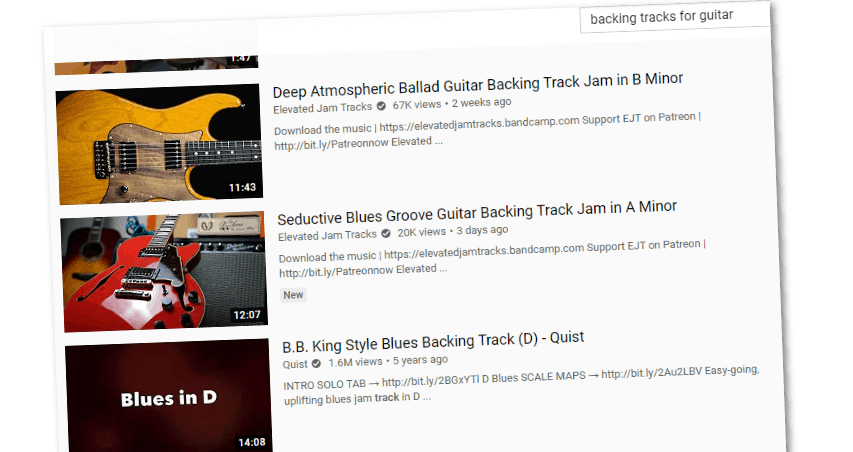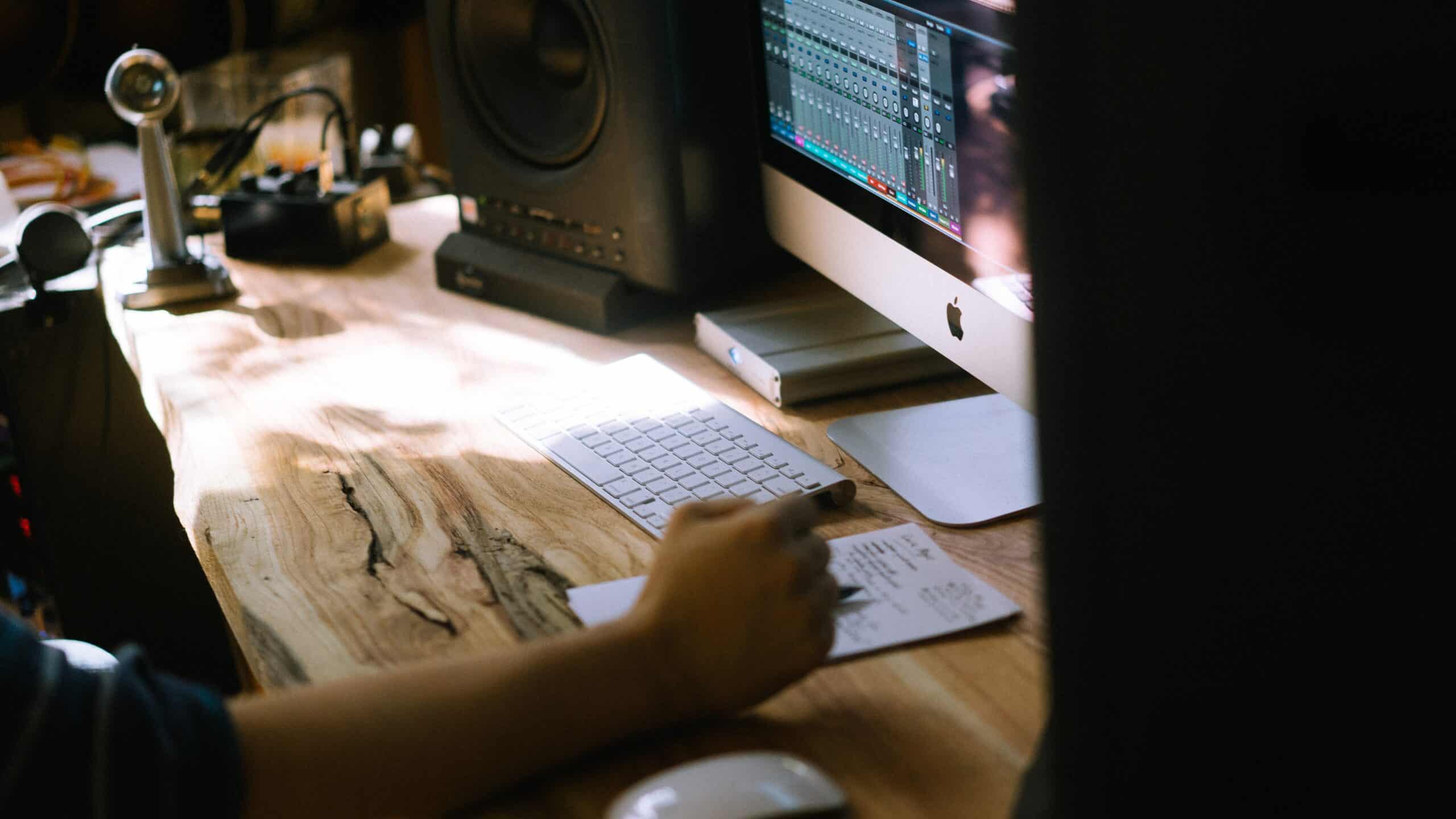Backing tracks are a great way for your to take your guitar practice to the next level! You should definitely explore adding this to your next practice session as it can help you out with critical guitar skills like improvisation and timing.
Thanks to the internet and the digital world we live in, backing tracks are in endless supply online - you can find some great sources in a matter of minutes.
Better yet, with a couple of tools, you can even create your own backing tracks!
Why Should You Use Backing Tracks?
There are two main ways you can use backing tracks to improve your playing.
The first is to practice chord changes. It's natural to slow down and speed up when you're playing by yourself. You might not even notice that you do it. Playing with a band is a great way to build an internal metronome. There are backing tracks for a lot of common songs that you can practice along with. This lets you enjoy playing songs you like, while working on your timing and chord changes.
The second way to use backing tracks is to practice your improvisation. This is mostly for soloing, but also works for lead parts and melodies. You'll see what works and what doesn't. What notes sound good over what chords. And it's a great way to memorize your scales by putting them to use.
A really cool thing I've seen are backing tracks that tell you what scale(s) might fit over the chord changes. That gives you a good starting point, and it lets you experiment and try new things as well.
One caution I want to give you is backing tracks aren't replacements for methodical practice that includes scales, exercises, and other key techniques. For that reason I don't recommend replacing these with backing tracks, but to use them as a supplement to all of these things.
So with all of that said, how do you find backing tracks?
How To Find Backing Tracks
You basically have 3 different ways to find backing tracks.
1. Search For FREE Versions
This is probably the most common method. The obvious first option is the old Google machine. Type "free backing tracks" in the search box and you'll get a lot of results. You can narrow it down by adding the song you're looking for, or a specific genre in the keywords too. Like "Bob Dylan backing tracks" or "rock backing tracks".
That's one way to search for it, but you can also go to reputable websites that have a lot of searchable backing tracks. One such website is guitarbackingtrack.com. This is just one, and there are a lot more options if you're willing to put in the detective work.
2. Find A Backing Track On YouTube
Most people use YouTube for videos, but there is a TON of music there too. Just like Google, YouTube uses an algorithm based on a lot of parameters. And with a little knowhow you can use that to find exactly what you're looking for.
Be sure to include some good descriptors. Do you want to practice along to an acoustic guitar? Add that to the search, like "acoustic backing track" or "Eagles backing track acoustic". Or you might want a full band version, so type that in.
One cool thing about YouTube is you can practice along to the actual song. In fact, you can even change the tempo too if it's too fast! This makes it a wonderful tool for practicing songs.

3. An Unexpected Source - SoundCloud
You've probably heard of SoundCloud, maybe you've even used it. I use it and upload to it. One thing I like to upload is backing tracks. You can find a good amount of backing tracks by using the same search methodology you would use on Google or YouTube.
Just like on YouTube or Google, add specific keywords to your search to narrow your results.
You Get What You Pay For
All three of these methods are free, but sometimes you simply get what you pay for. The versions might be bad audio, or different versions, or just not true to the song you want to play. Paid backing tracks can be well worth the investment.
In fact, Karaoke backing tracks are an exceptionally good way to play along to your favorite songs. Karaoke-Version.com has backing tracks for all instruments. They'll remove either the vocals or the instrument you play (like guitar). I find that while free versions are, well, free, sometimes it's better to just pay for them.
How To Make Your Own Backing Tracks

My personal favorite way is to make my own backing tracks. There's a tool called Audacity that lets you remove certain instruments or vocals from a track. It takes a little work but the results can be really good.
But what if you wanted to record your own backing tracks? In this case you would want to download a Digital Audio Workstation, or DAW for short. This is what studios all over the world use to record bands. DAWs like GarageBand, Cubase, Sonar, and Logic Pro are popular options.
This can get fairly involved but is great to get into.
But if you don't have the time to record from scratch then I would recommend using Band In A Box, or BIAB for short. This is what I use. It's an incredible program that lets you choose a style, put in the chords, and even add key changes. You can add different instruments like bass and drums. You can build one from scratch or use some of their templates.
The capabilities vary by the version you buy, but even the most inexpensive version is excellent.
I'm going to make a video demonstrating how I use Band In A Box by using the 'by scratch' method. It's a great way to build your musicianship.
I hope you try one of these options. I love using backing tracks to make my practice time a little more exciting. It's a perfect way to vary your routine and change things up.
What method sounds the most appealing to you? Let me know in the comments!

